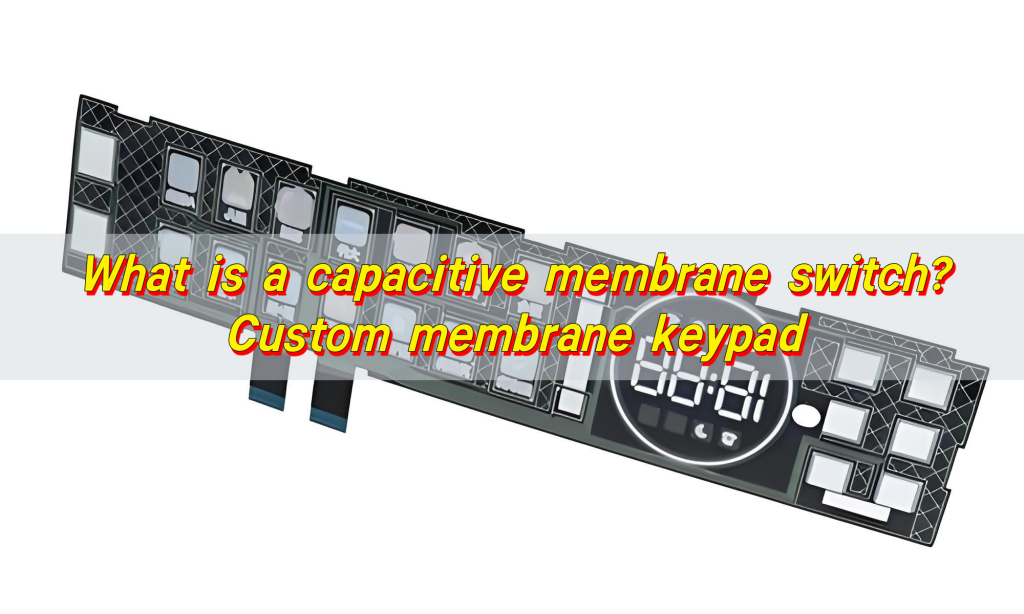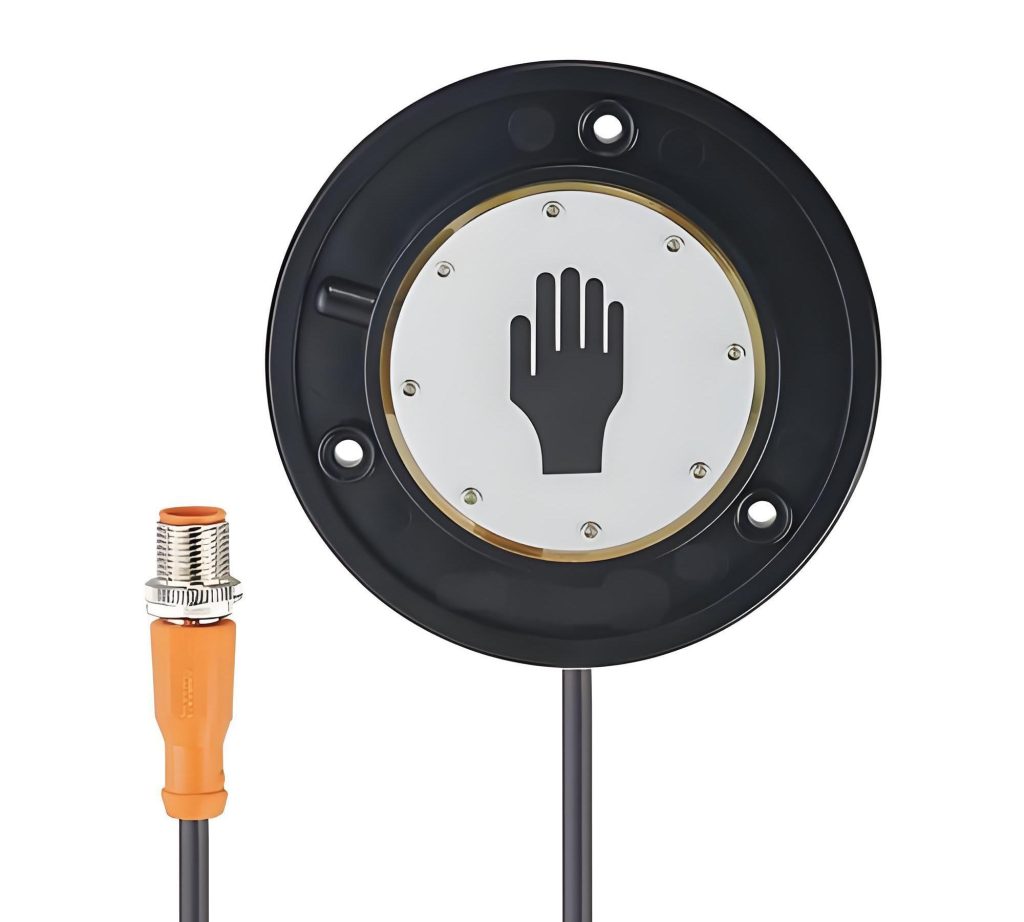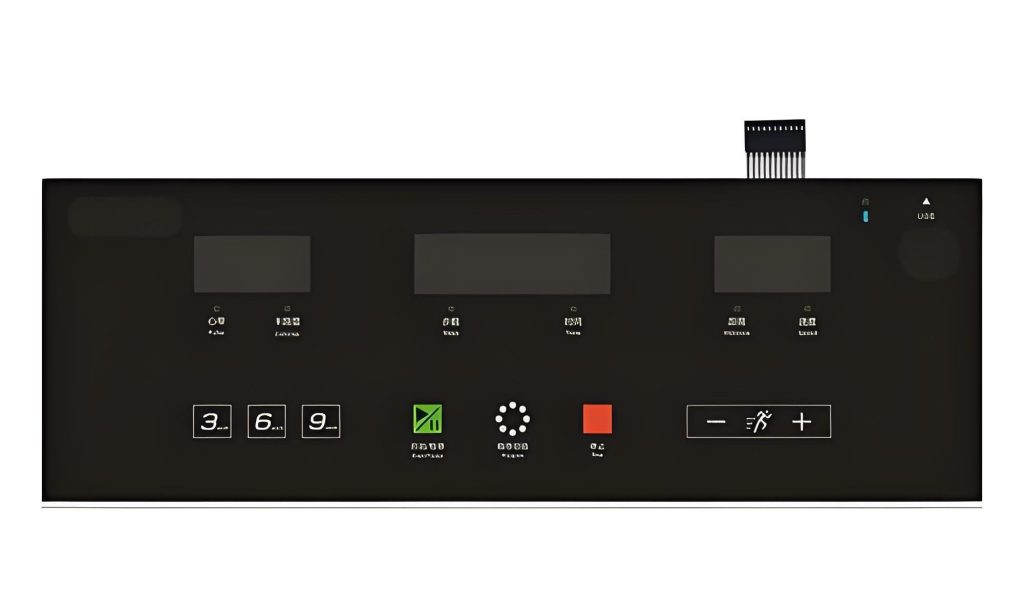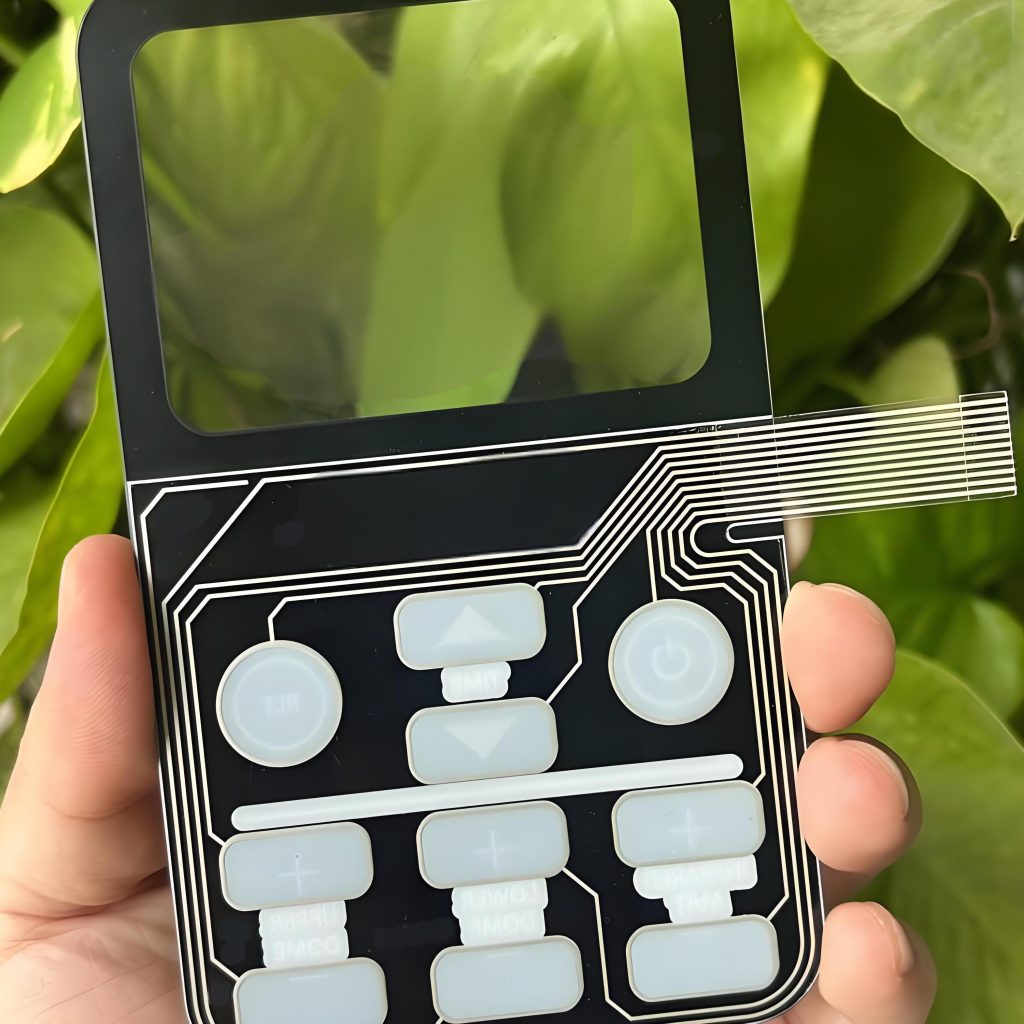
What is a capacitive membrane switch? Custom membrane keypad
What is a capacitive membrane switch? Custom membrane keypad
Capacitive membrane switch is a switch that works on the principle of capacitive sensing, triggering signals by detecting the change in capacitance generated when a person approaches or touches it. It is composed of multiple layers of film, including a conductive layer and an insulating layer. When a finger approaches or touches the switch surface, the capacitance value changes, thereby realizing the on-off control of the circuit.

What is a capacitive switch keyboard?
Capacitive switch keyboard is a type of keyboard that doesn’t rely on physical contact to register a keypress. Unlike mechanical or traditional membrane keyboards, this keyboard uses the electrical properties of the human body to detect touch. It feels light, fast, and smooth. There’s no need to press hard. Just a gentle touch is enough to trigger a response.
This type of switch is part of the capacitive membrane switch family. It consists of several layers, including a printed circuit and a top film. Underneath, there’s a sensing layer that reacts to changes in capacitance. When your finger gets close, the field shifts. The circuit detects that shift and registers a keystroke.
Many users find capacitive switch keyboards more comfortable. There’s no resistance. No click. Just smooth input. That’s why these switches are used in high-end products, medical equipment, and clean environments. They are quiet, efficient, and sleek in design. And with a custom membrane keypad, the layout, color, and symbols can all be personalized.
How does a capacitive switch work?
At its core, a capacitive switch detects the cChange in capacitance caused by a finger. Your body conducts electricity. When you move your finger close to the surface, it slightly disturbs the electric field created by the sensor.
Each capacitive membrane switch has electrodes embedded inside. These electrodes create a field that extends outward. The moment your finger comes into proximity, it changes that field. The controller notices the disturbance and sends a signal.
What makes this unique is that the surface stays flat. No physical parts need to move. This eliminates wear and extends the lifespan. Because of this, capacitive switches often last millions of cycles. They’re reliable even in demanding environments.
And if you’re designing a custom membrane keypad, you can control where the touch points go, how they behave, and even their shape.

Capacitive switches are also easy to clean. The sealed surface prevents dirt, dust, and water from seeping in. That’s why they’re used in food processing lines, hospitals, and outdoor devices. They’re durable, dependable, and elegant.
What is the difference between inductive and capacitive switches?
Though they may look similar from the outside, capacitive switches and inductive switches operate very differently.
Capacitive switches respond to a finger or other conductive material. They use electric fields and detect capacitance changes. They’re perfect for human interaction — like in a capacitive touch membrane switch or modern home appliance.
Inductive switches, on the other hand, detect metal objects. They use magnetic fields. When a metallic item comes near, the field is disrupted, and the switch activates. Inductive switches don’t respond to human touch. They’re used in machinery, robotics, or areas where metal tools are involved.
Another difference is in application style. Capacitive switches are smooth, sealed, and designed for clean or high-end environments. Inductive switches are robust, suited for tough industrial conditions.
If your product is touch-based, interactive, and needs design flexibility, a capacitive membrane is the right fit.
What is the working principle of capacitive proximity switch?
Capacitive proximity switch works without physical touch. It detects the presence of a fingerC or object that comes close, even if it doesn’t touch the surface. That’s called proximity sensing.
These switches emit a steady electric field. When an object, like a human hand, enters that field, the switch senses the change. Once the disturbance reaches a certain threshold, it sends a signal.
Capacitive proximity switches are very sensitive. They can be tuned to respond at various distances. Sometimes just a few millimeters away is enough. That’s useful in settings where contact must be avoided — such as sterile rooms, hospital panels, or industrial environments filled with gloves and oil.

With a capacitive membrane switch, proximity function can be integrated into the design. This means you can have areas that respond before the user even touches the surface. It improves user experience and protects the interface from wear.
And since the surface stays flat and sealed, cleaning becomes easier. No crevices, no buttons, no contamination risk.
What triggers a capacitive sensor?
Capacitive sensor is triggered by any object that holds an electrical charge. Most commonly, this is the human body. Our skin contains moisture and salt, which conduct electricity. When your finger comes near, it disturbs the sensor’s electric field, causing it to activate.
The amount of disturbance depends on size, distance, and material. A fingertip causes a large enough shift to trigger the sensor. A plastic tool? Not likely. A metal object? It may work, but only if grounded or large enough.
This selectivity is a strength. Capacitive membrane switches are resistant to false triggers. They won’t activate from dust, air movement, or lightweight objects. Only something conductive and properly sized — like a finger — can trigger them.
You can also adjust the sensitivity. Some switches can detect through gloves. Others ignore minor changes. It all depends on how the custom membrane keypad is tuned.
How to know if it’s capacitive or inductive?
Touch the switch with your bare finger. If it activates easily, it’s probably capacitive. Now try it with a plastic stick or gloved hand. If it doesn’t respond, that confirms it further.
Next, try using a metal object. If it activates only when metal is present — regardless of human touch — it’s likely inductive.
Another clue is location. Capacitive switches are common on touch panels, appliances, or medical tools. Inductive ones are more often used in automation lines or machinery where metal parts pass by.

You can also tell by feel. Capacitive membrane switches are usually thin, flat, and clean in design. They’re part of a smooth surface, often behind plastic or glass. Inductive switches may look more like metal sensors or embedded triggers.
Conclusion:
Capacitive membrane switches are smooth, responsive, stylish, and require only the lightest touch. These switches detect changes in an electric field, not pressure. Because of this, they last longer and perform better.
Compared to inductive switches, they’re ideal for human contact. They respond only to conductive materials like fingers. They’re perfect for custom applications — from healthcare to smart appliances.
Ready to create your own capacitive solution?
We specialize in manufacturing high-quality capacitive membrane switches and custom membrane keypads tailored to your needs. Contact our experts today sales@best-membraneswitch.com

Top Membrane Switches for Home Electronics Projects in 2025
You can elevate your home electronic membrane switch project in 2025 with standout models such as the 4×4 Matrix 12 Keys Keypad from SOUSHINE, the rgb-enabled strip switches from Molex, and custom graphic switches by Panasonic. These switches offer slim profiles and reliable performance, making them easy to integrate into your DIY setup. You gain ...

Top tips for fixing PS4 controller conductive film keypads
Are you frustrated because your PS4 controller buttons have stopped working? You are not alone. Many gamers experience issues with the conductive film keypad for ps4. Button failures often happen because of dirt, debris, or rough handling. Take a look at the most common causes: Cause Description Dirt and debris Accumulation in button crevices can ...

Top Membrane Switch Companies Leading the Industry in 2025
You see a dynamic market shaping the future of membrane switch technology. Leading companies like Molex, SOUSHINE, YU AN Electronics, TE Connectivity, Honeywell, Omron, Mitsubishi Electric, Panasonic, Industrial Print Technologies, SCHURTER, XYMOX, Douglas Corp, Dyna-Graphics, ELO Touchscreens, UTC, LUNFENG Technology, and Fujikura drive growth with innovation and global reach. Choosing the right membrane switch company ...
Contact us online